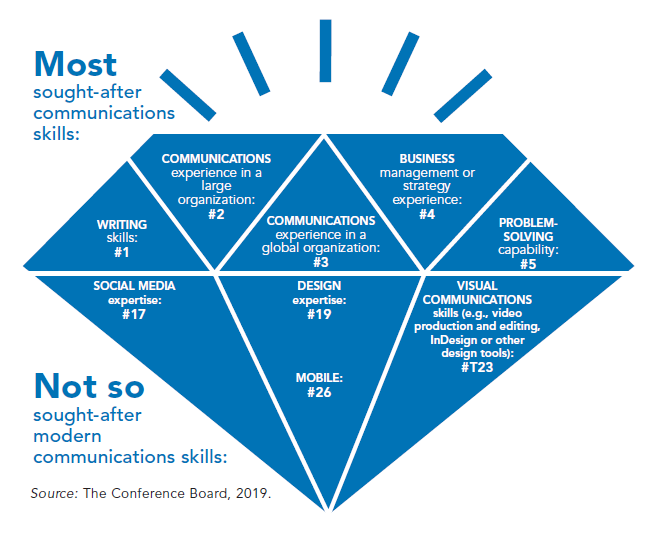At the World’s Leading Companies, Corporate Communications—and Communicators—Are Increasingly Taking Center Stage
Latest Press Release
At the World’s Leading Companies, Corporate Communications—and Communicators—Are Increasingly Taking Center Stage
A confluence of technological, economic, and societal factors is rapidly elevating the influence of corporate communications within the world’s C-suites and boardrooms. Released today by The Conference Board, Corporate Communications Practices: 2019 Edition draws from a survey of nearly 150 major private and public companies. The findings produce a global portrait of the communications function’s growing strategic importance in creating value and improving business outcomes.
Among the key findings in this year’s report:
- Distinguishing substantive datapoints from “vanity” numbers in social media metrics. The easy availability of social media metrics has spurred a rapid increase in companies using such analytics to measure success. Companies need to avoid the temptation to confine themselves to easy-to-reach “vanity” metrics and instead look for data that directly translates to improved business outcomes.
- Articulating clear social media policies. While 43 percent of companies still inhibit employee social media use, 89 percent of companies that do permit it have formal guidelines on how their workers can do so. Such guidelines should be aligned with corporate goals to best position the company for success.
- Center stage, in the strategic spotlight. The business world continues to grow more communications-driven, with modern technology delivering information about companies to consumers, and consumer data to companies, at unprecedented speed and volume. In response, large public companies are putting their corporate communications functions into a stronger position to influence business strategy by ensuring more senior communicators are among key corporate decision-makers.
- Future-facing communications. The ability to write clearly remains the most sought-after communications skill, but future-facing teams understand that it is necessary but not fully sufficient. Modern communications demands not only the ability to write longer reports and thought leadership pieces but also shorter, digestible pieces suitable for social and mobile consumption. Traditional writing skills, therefore, should be accompanied by abilities that can translate into visually appealing storytelling. However, the survey shows that such modern communications skills remain low on the ranking of what teams seek.
“We live in a time when stakeholders demand companies take public positions on critical issues, communications technologies deliver data and information faster than ever, and employees trust their employers more than any other institution,” said Alex Parkinson, the author of the report. “These are the realities that govern modern corporate communications and are driving communicators to evolve into broader business strategists.”
Corporate Communications Practices: 2019 Edition is the third in a series of analyses documenting the changing role of corporate communications. In addition to the trends noted above, the report highlights the need for adaptability and collaboration among corporate communicators, supported by data and visualizations of key forward-looking insights for what’s ahead, including:

- Companies should consider putting more emphasis in modern areas that still trail behind on the list of most sought-after communications skills, including social media (ranked #17), visual communications, (#23), and mobile (#26)
- Large organizations can take a cue from smaller companies, which have led the way on communications integration—48% of companies below $1bn in revenue now report having a fully integrated corporate marketing and communications function
- Companies can do more to maximize the growing power of employees as brand advocates—43% of companies still prohibit employees from using social media at work or require pre-clearance
- Organizations may need to augment their teams to keep pace with the competition—42.8% of companies grew the size of their corporate communications departments in the last fiscal year, compared to 32.1% reporting no change and 25.1% reporting reductions
- Manufacturers, in particular, can gain a leg-up by focusing on centralizing communications functions and strategies—just 28.9% of manufacturing companies currently describe their corporate communications as centralized, compared to 70.0% in financial services
About The Conference Board
The Conference Board is the member-driven think tank that delivers trusted insights for what’s ahead. Founded in 1916, we are a non-partisan, not-for-profit entity holding 501 (c) (3) tax-exempt status in the United States. www.conference-board.org.
For further information contact:
Joseph DiBlasi
781.308.7935
JDiBlasi@tcb.org
Jonathan Liu
732.991.1754
JLiu@tcb.org








